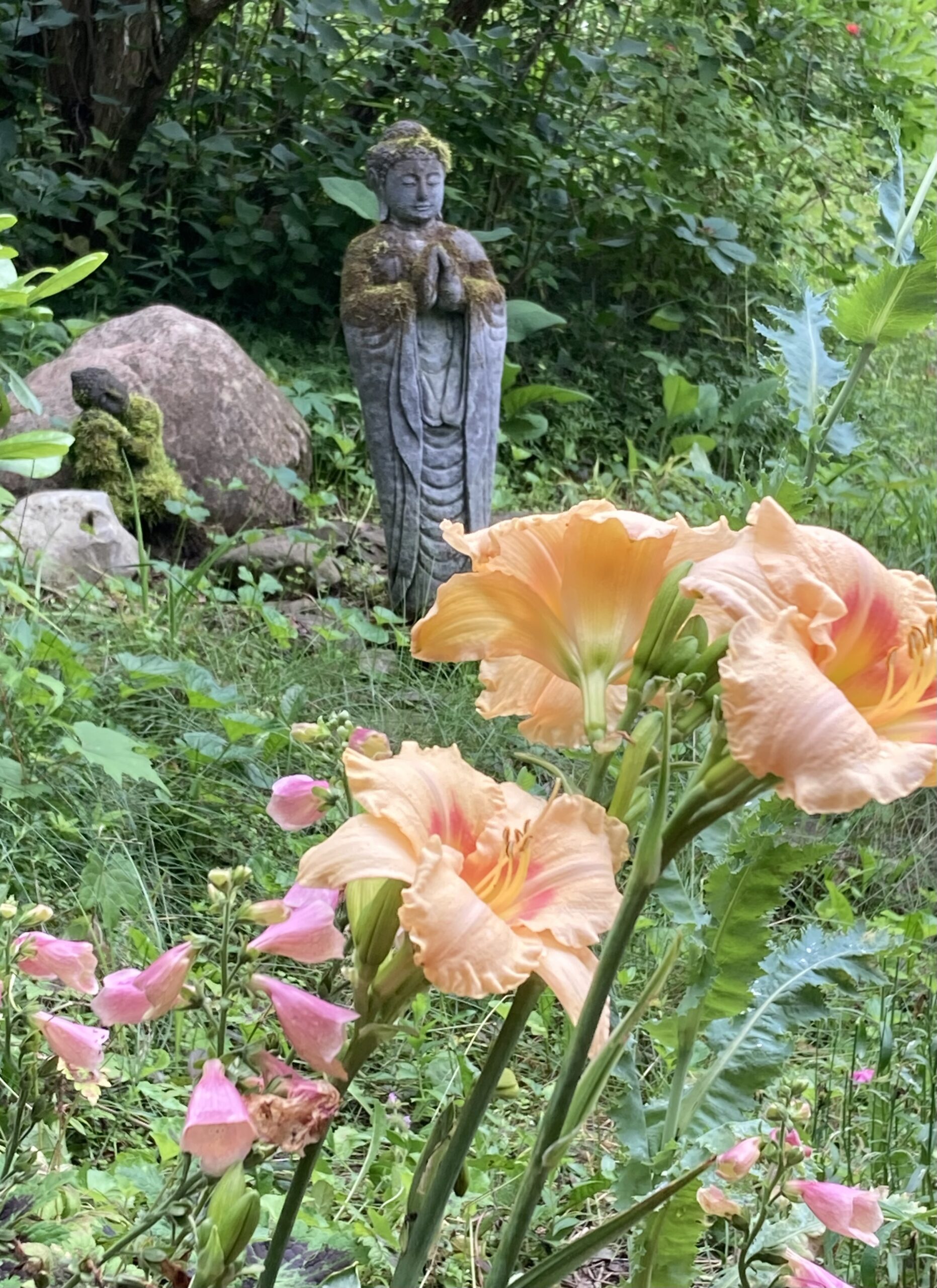I so enjoy spring and summer. Despite the drought this spring, and the continual rains that have so far marked the summer, I feel like I’m once again a child on vacation. I hear the song “Summertime” in my head, and feel that every day I can play, do something new, create, get together with friends. Everything is so alive. In both spring and summer, so many birds, peepers, cicadas, etc. speak up, and seem to speak to me.
So, taking a walk during the summer or spring, in any natural setting, or in the blocks or parks of a city, immerses us in this beauty. It can be a meditation if we bring full attention to it. We don’t need to do a formal walking meditation. We just walk normally, and let the exercise remind us it’s not just what we do that determines how we feel, but how much awareness we bring to it.
Since the beginning of the pandemic, two things I’ve been doing even more frequently than before is reading about and practicing meditation, and taking long walks or hikes. And I’ve found a few things that increase the joy I have when walking. One particular reading that inspired me was Old Path White Clouds, the Story of the Buddha, by the revered Zen teacher and activist Thich Nhat Hanh. It was recommended by a friend and co-worker. The book gives us a wonderful insight into the deep history of meditation and mindfulness practice.
In the book, the Buddha is described as walking “just to enjoy the walking, unconcerned about arriving anywhere at all…[not] anxious or impatient… [T]heir steps were slow, balanced, peaceful…yet they covered a good distance each day.”
I’d like to walk like this. How did the Buddha and followers do this? One method described was making a moment of walking a moment of practice and potential insight, “observing each breath,” step, and part of the breath. In other writings, Thich Nhat Hanh explicates further how to be at one with the walking, so we notice the whole universe walking together.
It’s so easy to get distracted or lost in thoughts or worries, or to lose awareness of where we are. So, whatever reminds us to pay attention to where are, who we’re with, what our body-mind is telling us, can help our overall sense of well-being.
Even before we start, we can stop. Close our eyes partly or fully, and just greet our body, be aware of what’s going on right now. Or we feel our feet on the earth, or the pace and depth of breath, how tense or relaxed are our shoulders and belly. Then we walk.
Walking, the capacity for upright, bipedal movement, is, after all, a major defining characteristic of being human. It can be great fun when we do it just to do it and it’s not solely a means of transporting us from where we are to where we aren’t. Or we don’t do it only to meet exercise goals recorded by devices like a fitbit or apple watch or satisfy societal created images.
Such motivations can lead us to walk only to get it done, to check off a box in an accomplishment ledger. This focuses us on the future, and we miss what’s here, now. And 10,000 steps can seem a lot; one step can be simple and easy….
*To read the whole article, please go to The Good Men Project.



